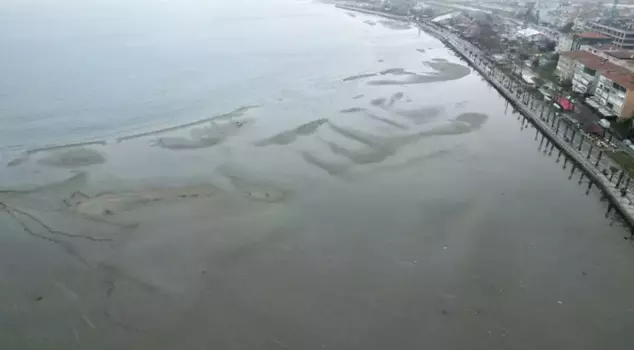
08.02.2025 11:31
After the earthquake swarm in the Aegean Sea, attention turned to the Marmara earthquake. One of the most significant signs of the earthquake, the movement of seawater, was observed in Silivri, Istanbul. The 150-meter retreat of the Marmara Sea's Silivri shores caused concern. As a result of the retreat, small islets were formed.
The earthquake storm in the Aegean Sea is being closely monitored by the people of Istanbul. Due to tectonic movements, the sea water can also recede, which was observed in the Marmara Sea near Silivri, Istanbul. The small islets formed by the sea receding by approximately 150 meters have astonished the local residents and nearby citizens. Aerial images captured by drones clearly revealed that the sea level has significantly dropped from its normal level.
THE SEA RECEDING DESPITE RAINY WEATHER
Despite the rainy weather conditions, the receding of the Marmara Sea has raised concerns. The emergence of the seabed and the formation of small islets along the coast have started to come under scrutiny.
IS THERE ACTIVITY UNDER THE SEA?
While some express that such events are a part of nature and can occur from time to time, others point out that the sea receding in this way may be related to the underground water levels in the region or underwater activity.
REASONS FOR THE SEA RECEDING
Meteorological Factors: Wind, pressure changes, and tidal events can affect sea level. Especially strong and prolonged winds can cause the water to be pushed away from the shore, leading to sea recession. In high-pressure areas, sea level may also drop. Tidal events regularly cause changes in sea level.
Ocean Currents: Cold and warm water currents can regionally affect sea level. Cold water, being denser, can lower sea level.
Tectonic Movements: Tectonic events such as earthquakes can cause changes in the seabed. These changes can affect sea water levels and lead to sea recession. However, sea recession does not always indicate an impending earthquake.
Tsunami: Sea recession can be a precursor to a tsunami wave. Tsunamis typically occur as a result of sudden displacements in the seabed. Sea recession may be observed before the tsunami wave reaches the shore.